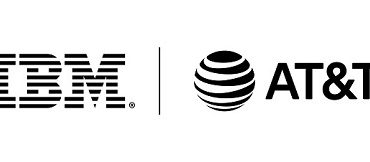Red Hat in Middle of IBM-AT&T’s Expanded 5G, Cloud Pact

Ranked behind only the Dell-EMC and Avago-Broadcom acquisitions as the largest in the history of the technology industry, IBM’s $34 billion blockbuster purchase of Red Hat, announced last October and closed last week, may already be paying dividends. This morning IBM and AT&T announced a multi-year alliance, and Red Hat is in the middle of it.
IBM and AT&T said the two companies will expand their existing relationship to move AT&T business applications to IBM Cloud, utilizing Red Hat’s open source platform for workload and application management. In return, AT&T will become IBM’s primary provider of software-defined networking (SDN), including 5G, edge compute and IoT, as well as multi-cloud capabilities using Red Hat.
The companies said their collaboration on edge computing platforms will capitalize on 5G to “rapidly transmit data to and from multiple clouds and billions of edge devices with increased reliability and security, reduced latency and dramatic improvements in bandwidth.” Noting that AT&T is an existing user of the Red Hat platform, the companies said IBM's Red Hat acquisition will give AT&T “even greater access to Red Hat Enterprise Linux and OpenShift platforms as the foundation for workload portability and interoperability across any vendor's cloud, on or off premises.”
At least one observer said the deal could bring about a strong combination of technologies – but that IBM is moving from a position of cloud market weakness.
 “IBM is trying to keep their presence in the cloud conversation in the industry,” said Sid Nag, research VP at industry watcher Gartner. “With their not-so-stellar performance in the past competing with AWS, Microsoft Azure and Google Cloud, bringing in AT&T is an interesting play, especially given AT&T’s initiatives in the 5G networking space.”
“IBM is trying to keep their presence in the cloud conversation in the industry,” said Sid Nag, research VP at industry watcher Gartner. “With their not-so-stellar performance in the past competing with AWS, Microsoft Azure and Google Cloud, bringing in AT&T is an interesting play, especially given AT&T’s initiatives in the 5G networking space.”
Both Nag and Patrick Moorhead, president and principal analyst, Moor Insights & Strategy, said a critical challenge for aspiring 5G carriers is network monetization.
“AT&T is in a major transition from a ‘dumb pipe’ vendor to a media and business services company,” said Moorhead. “To accomplish this and take advantage of 5G and IoT, AT&T needs to do IT differently. Hybrid and multi-cloud makes sense as it can’t just magically transition everything over to the public cloud, nor would this make sense.”
Nag emphasized the potential revenue generation of getting workload-based solutions on the network. “And what better way to do that than create that nexus of 5G, edge and cloud…?” he said. “The network itself isn’t going to make money, eventually it will get commoditized, so leveraging the 5G network for the whole workload-based approach while partnering with a cloud provider is going to be interesting.”
Earlier this year, AT&T CFO John Stephens said 5G adoption by businesses is “the most exciting opportunity we have,” adding that the company is “convinced that business will lead in the innovation around 5G” for such purposes as factory automation, healthcare and new IoT applications. During next year, AT&T anticipates its 5G network will cover approximately 200 million people in the U.S.
Getting workloads into clouds and onto 5G is where Red Hat comes into play.
“How do you take applications and modernize them? Red Hat’s container (OpenShift) technology and (Linux) operating system platforms are going to be part of this narrative,” Nag said. “…They’re leveraging the Red Hat piece, they’re thinking: how do we… encourage people to build more applications under Red Hat technology and provide application portability and, hopefully, some of these applications start to move toward IBM Cloud. That’s a bit of a far-fetched pipedream, but regardless, they get revenue from Red Hat technology, and services thereof, because all these applications will have to be modernized to run in that container model, and Red Hat plays a big role with its OpenShift technology.”
Among other capabilities, Red Hat’s ecumenical middleware enables multi-cloud implementations, which can be a complex undertaking that leads to a need for services – IBM services. Nag recalled last February’s IBM Think conference, which included several announcement underscoring Big Blue’s embrace of multi-cloud and promotion of widespread adoption of Watson (IBM cognitive technology), a narrative that can be supported by Red Hat’s OpenShift containerization software.
“It was a tacit admission that (IBM is) not going to compete with the hyperscale cloud providers,” said Nag, “because they tried it for several years…, they just couldn’t make it work. … They’ve come to realize if they want to make a dent in the cloud business they have to focus on the services piece… I think what they’re really saying is they’re going to play nice with the other clouds, that the world is multi-cloud…, they’re going to take some of their portfolio, like Watson, and spread it across multiple clouds so they can get some revenue from Watson. I don’t know how that’s going to play out because each of the public cloud providers have their own AI and ML functionality, sometimes probably even better than Watson.”
Today on CNBC, IBM CEO Ginni Rometty said, “This is all about IBM becoming the primary partner for both the development and modernization of the AT&T applications and moving them to IBM Cloud for AT&T Business. And then AT&T and IBM together will be building an edge mobile platform, particularly for enterprise clients.”
She noted that AT&T has used Red Hat for “moving their network to software-defined, (and) this is an expansion of Red Hat in the network.” The AT&T network will be used internally by IBM.










